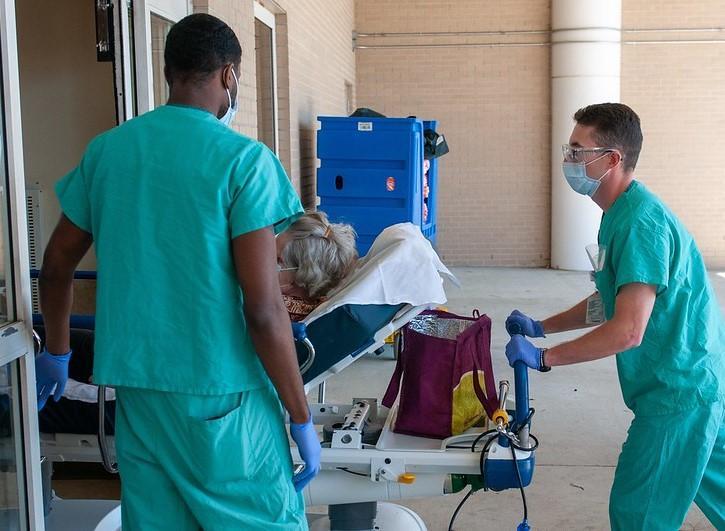An analysis of more than 19 million hospital discharges in 36 US states suggests that the quality of nonsurgical care for non-COVID patients declined significantly during 2020 COVID-19 case surges.
For the study, published today in JAMA Network Open, researchers from the Agency for Healthcare Research and Quality (AHRQ) evaluated care-quality indicators of 19,111,629 releases from 3,283 hospitals in 2019 and 2020.
The team mined AHRQ's Healthcare Cost and Utilization Project State Inpatient Databases on hospital admissions in 2019 and 2020 and patients without a diagnosis of COVID-19 or pneumonia who were at risk for pressure ulcers and death due to heart attack, heart failure, stroke, gastrointestinal bleeding, hip fracture, and coronary-artery stent placement.
High COVID-19 admission was considered 15 or more per 100 beds, while low was considered less than 1. The average patient age was 63 years, and half were women.
"The COVID-19 pandemic posed numerous challenges to maintaining care quality in US hospitals," the researchers wrote. "During surges, hospitals experienced unprecedented strain, with increased volumes of patients with severe illness and shortages of staff, beds, and supplies. However, hospitals often experienced few or no COVID-19 admissions, and during these periods occupancy levels were lower than in 2019."
Implementing quality-continuity measures
From weeks 18 to 48 of 2020, 35,851 hospital-weeks (36.7%) had low COVID-19 patient admission rates, and 8,094 (8.3%) had high rates.
Quality indicators for non-COVID patients worsened significantly during weeks with high COVID-19 patient hospitalizations. Rates rose for pressure ulcers (0.09 per 1,000 admissions; relative change, 24.3%), heart failure death (0.40 per 100 admissions; relative change, 21.1%), and hip fracture death (0.40 per 100 admissions; relative change, 29.4%). Likewise, the weighted average of mortality for the care indicators climbed 0.30 per 100 admissions (relative change, 10.6%).
Strategies such as building an organizational culture that prioritizes patient and workforce safety and maintaining nurse to patient ratios may help to build resiliency during periods of strain.
"Increases were statistically significant and clinically meaningful; for example, pressure ulcer, heart failure mortality, and hip fracture mortality rates all increased by at least 20% during weeks with high compared with low COVID-19 admissions," the authors wrote.
The researchers said the decline in care quality may have occurred because of staff shortages, assignment of inadequately trained staff to medical floors for non-COVID patients, visitor policies limiting family support, inability to monitor and manage changes in patient status, a lack of personal protective equipment, and disrupted quality-improvement processes.
The findings underscore the importance of finding new ways to maintain hospital care quality, the researchers concluded. "Further research is needed to explore these complex factors and identify practices that improve health care resiliency," they wrote. "Strategies such as building an organizational culture that prioritizes patient and workforce safety and maintaining nurse to patient ratios may help to build resiliency during periods of strain."



















